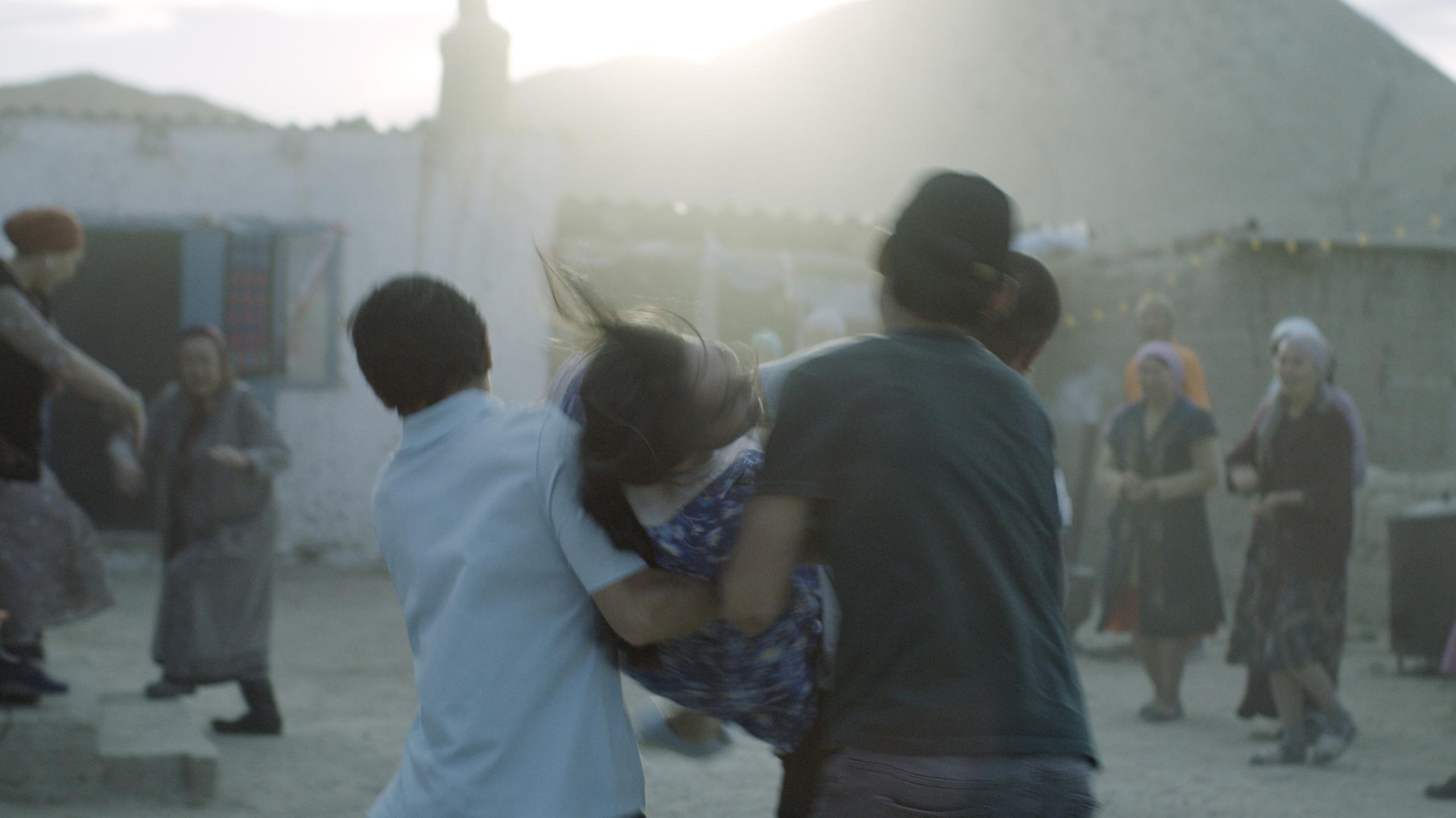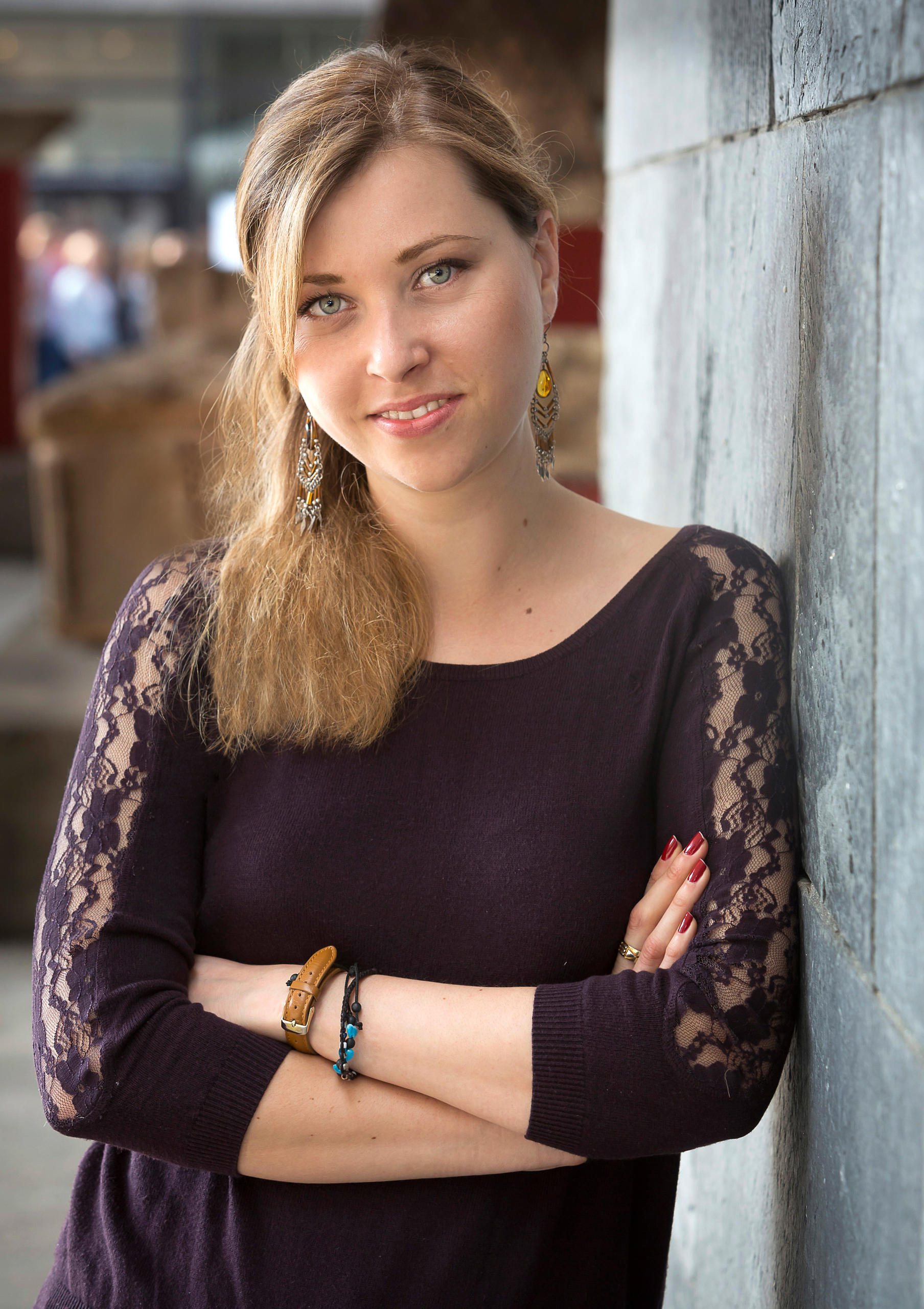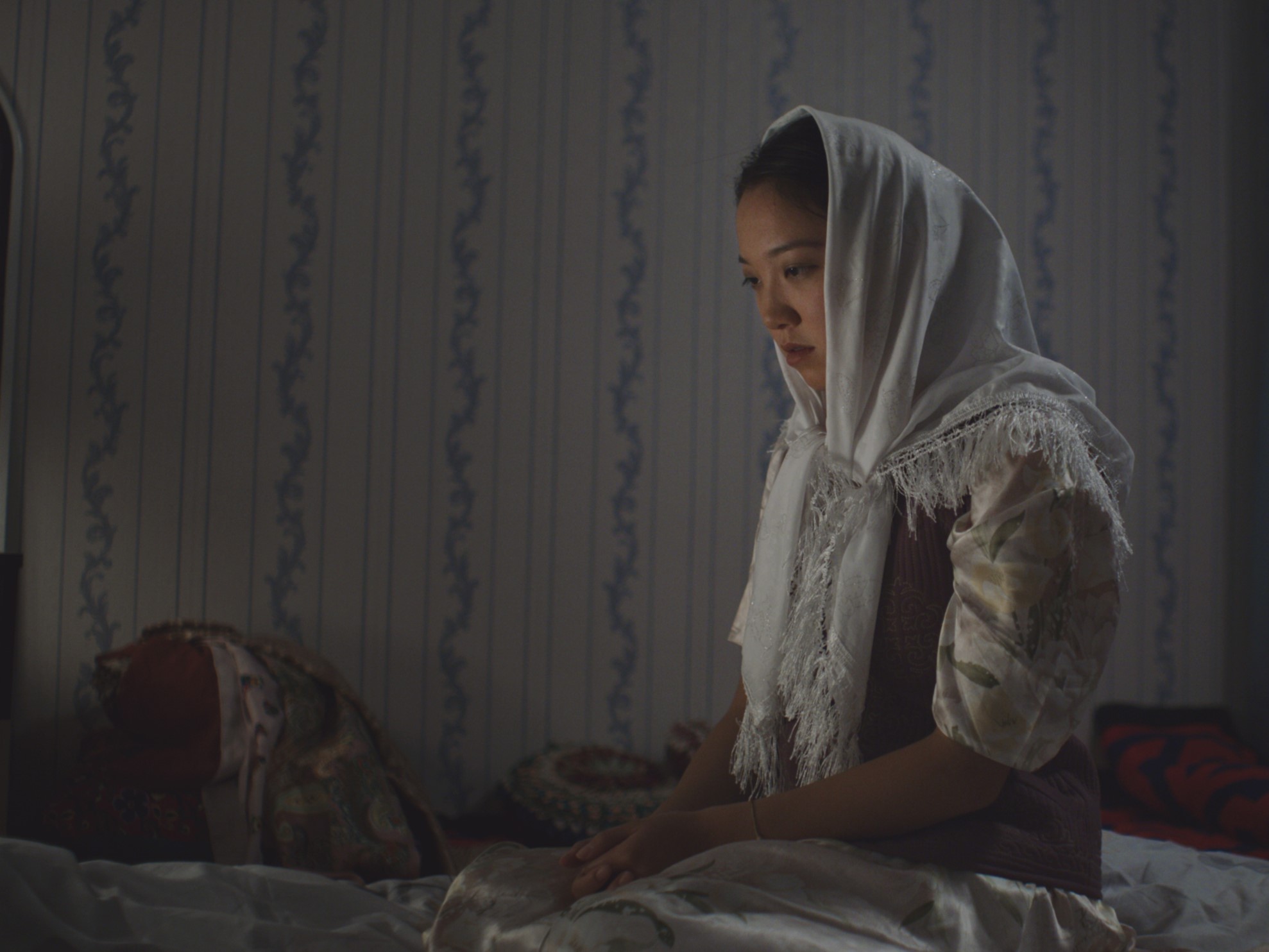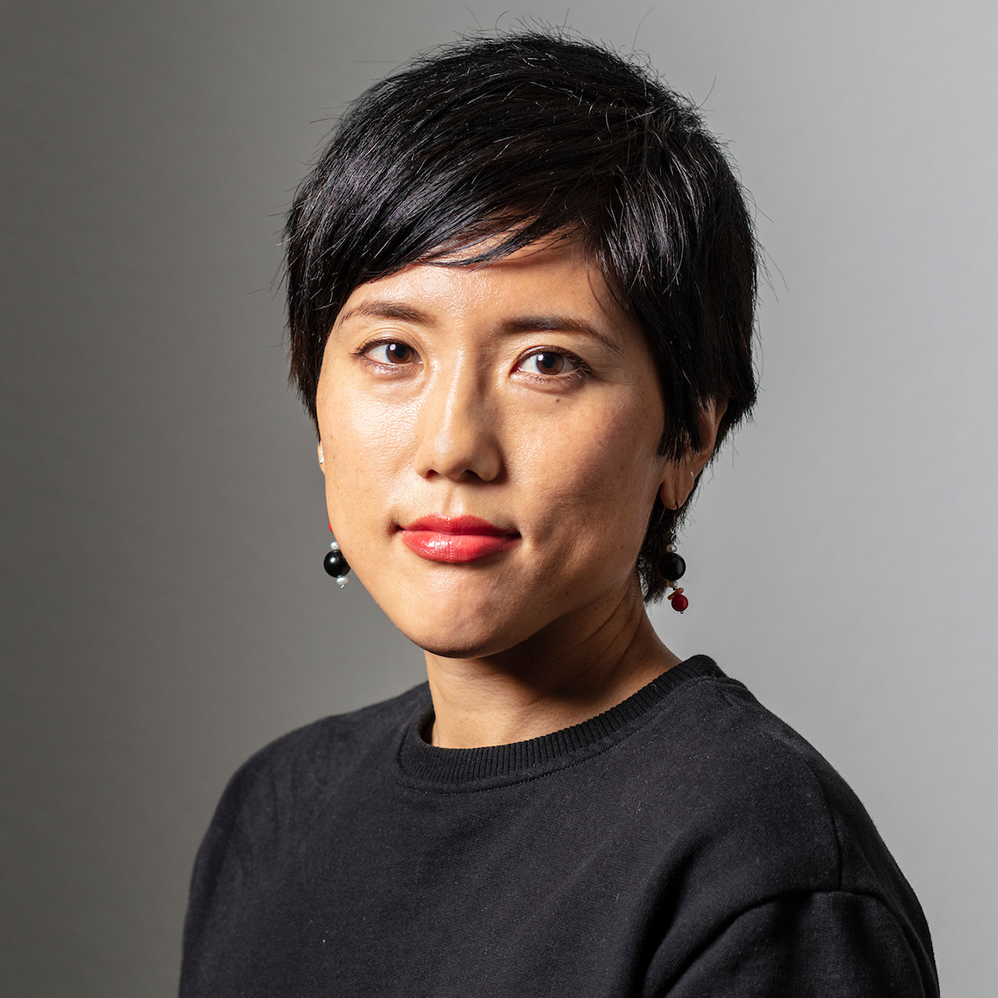Zurich director shines light on Kyrgyz bride kidnapping

Kidnap a girl and marry her. Maria Brendle’s short film Ala Kachuu - Take and Run depicting the harsh Kyrgyz tradition of bride kidnapping has been nominated in the Best Live Action Short Film category at this Sunday's Oscars. The Zurich-based German director hopes her film sends a message to all girls to fight for their rights.
SWI swissinfo.ch: Why did you make a film about bride kidnapping?
Maria Brendle: I didn’t know anything about bride kidnapping until 2016, when a friend of mine who travelled through Kyrgyzstan told me about his experience. There was a girl with a sad face in one of the pictures that he took. He said, “She is kidnapped,” and told me that in Kyrgyzstan it is usual that men kidnap women to marry.
I could not believe it. I started to research the issue and learned that many girls were the victim of bride kidnapping in Kyrgyzstan, in Central Asia, and in some parts of Africa. But among my friends and my family no one knew about this. I felt ashamed that I had never heard about it.
As a filmmaker, I wanted to change the fact that no one knows about the fate of these girls by producing a film. This is how the journey started.
SWI: During your research you visited a women’s shelter in Bishkek, the capital of Kyrgyzstan. What did you learn there?
M.B.: In the shelter, many girls and women shared their experiences. Not everyone was a victim of bride kidnapping. But I talked to a mother who was about 40 years old. She was the mother of a little boy, maybe seven years old. She had been the victim of bride kidnapping. When her husband died, the parents of the husband kicked them out.
There was another girl who was very young. She had to marry a boy she barely knew because it was what her parents wanted. On the wedding day, her two friends brought her to the women’s shelter. But she said she was very scared that someone could come and take her back home.
SWI: The main character Sezim, a young Kyrgyz girl, is a strong figure who fights for her freedom. Was the character created based on those women’s experiences?
M.B.: I had a lot of thoughts. In real life, a lot of girls commit suicide after they are kidnapped. That was in my head too, of course.
But I asked a woman in the shelter what they wanted me to do with this film. She said, “a strong female character, a role model for young girls.” So, it was clear to me to create such a figure. To tell young girls, “know your rights, be strong, say no and use your voice”.

SWI: A girl gets abducted by a group of men and then taken to the family of a groom who is waiting for a bride. She gives up after resisting for hours. Is this how bride kidnapping happens?
M.B.: What I wrote in the film is mostly how it happens. It depends, of course. Some girls ask their boyfriends to kidnap them because their parents want them to marry another man. Such cases could also happen.
SWI: But it could be a total stranger who kidnaps you…
M.B.: In the casting, one guy said very proudly, “I have carried out three bride kidnappings. The last time we did it was in Bishkek. We decided to take the next girl who came around the corner.” And they did. This girl was in the wrong place at the wrong time.
I reflected this in my script. Sezim was not the first target. Her colleague, who was the initial target, was not there; that’s why the men took Sezim.
A girl who studied in Bishkek told me that she never talked to male classmates. She was afraid that boys would think she was looking for marriage if she did. If you are a girl turning 14 or 15, you live in fear every day. When you leave your house, a car full of guys could come and take you to a family to marry a stranger or a boy you saw only twice.

SWI: The most shocking part of the film is how the women in the groom’s family convince Sezim to accept her fate.
M.B.: I wanted to show that this is a kind of cycle between women. Because older women, who also got kidnapped, say, “I survived that, so you can too”. It’s important to understand why the women and the men are like that, because it’s their culture. It’s happening every day, over generations. It’s kind of normal.
SWI: But bride kidnapping is illegal in Kyrgyzstan…
M.B.: It is. But tradition is more important. I heard a story about a girl who got kidnapped. She ran to the police, but the policeman said to her, “It’s not my problem. Go and talk to your family.” Imagine you’re in a house in the middle of nowhere, miles away from home. You can’t just go to the police. the police are even kilometres away. You have no other choice but to stay.
I heard that 80% of the girls are staying with the husband because they are scared. They don’t want to bring shame on their family by running away.
SWI: Why did you decide to make a short film, not a feature?
M.B.: We thought about it too, but it was such a challenge shooting a film in Kyrgyzstan. In some places we had no electricity. I hoped we could at least make a two-minute video and that I could do something with it.
After we came back to Switzerland, we thought about making a longer version. But the pandemic came. It was not possible to go back to Kyrgyzstan again to shoot in 2020.
Another reason was that I wanted to raise awareness. A short film can go on festival programmes all over the world so that everyone knows about bride kidnapping. And lastly, we did not have enough money.
Sezim is 19. She wants to fulfill her dream of studying in the Kyrgyz capital when she gets kidnapped by a group of young men and taken to the hinterland. There she’s forced to marry a stranger. Sezim desperately seeks a way out.
The 38-minute film has been nominated for the 94th Academy Awards in the Best Live Action Short Film category. The winner will be announced on March 27.
SWI: Do young generations accept this practice as a part of Kyrgyz traditions?
M.B.: The young generation see it this way. They say: “It happens maybe in the countryside. Not to me.” But this is the problem, because if they get kidnapped, they don’t know what to do.
I heard there’s now a mobile phone app for girls to learn how to fight bride kidnapping, giving useful information where they can get help. Creating awareness is so important because it could happen to you at any moment. You have to be prepared.
SWI: Does bride kidnapping occur only in the countryside?
M.B.: A lot of people think bride kidnapping happens only in the middle of nowhere. It happens in the city as well, but not so often.
SWI: Making a film about a different culture can be tricky. While you could bring a fresh perspective into an issue, your prejudice could also prevent you from understanding the whole picture. How did you deal with this?
M.B.: It was very important for me to give respect. I don’t want to be a European girl who says, “Hey, what you are doing is wrong, I know better.” In the process of doing my research, writing the script, and shooting scenes, I always asked the Kyrgyz crew members and actors if we were getting it right. If not, I changed the script. They helped me to understand their culture.
SWI: Forced marriage is not happening only in Asia, but also in Europe. In countries such as Germany, Britain and Switzerland, cases of forced marriage have been reported in recent years. Have you ever thought of making a film about that?
M.B.: I knew about Turkey or India, where arranged marriages or forced marriages occur. But I never heard about Kyrgyzstan. It was an unknown topic to us. That’s why I set my goal to create awareness about the country.
I heard from a Swiss organisation fighting forced marriages about many African girls’ cases. A lot of African girls are forced to get married against their will. In these modern times, there are young girls, only 13 years old who become the victims of such traditions. It’s unbelievable that your own family, who should protect you, brings you to an old man to marry him. It has to stop.
SWI: What is the most important message you wanted to deliver to the world via this film?
M.B.: We need people who tell the girls, maybe in school, that it’s wrong. We need education for all girls, everywhere in the world. You cannot just take a girl and become an owner of a human being. It’s just not right. My message to all young girls is to fight for your rights.
SWI: Ala Kachuu – Take and Run has received many international awards and now the Oscar nomination. How do you feel about the recognition the film has received?
M.B.: It is amazing. Six years ago, I was just a girl with an idea. And I thought, “OK, let’s go as far as I can. Maybe something will happen.”
Now I’m sitting here in Los Angeles, going to the Oscars. The whole world knows this film. I have received so many messages from all over the world through social media. I thank the whole team, the whole crew, and all the brave women who confided in me and told me their stories.
SWI: Sezim’s story ends ambiguously, leaving it up to viewers to imagine what comes next.
M.B.: I didn’t want to bring the story to a clear conclusion because that’s how it is for the kidnapped girls. They could flee from their husbands, but where can they go? Where should they find some help? What will happen to them after? I want the audience to think about that.
Born in Germany, Maria Brendle is an award-winning director and scriptwriter, who has been based in Zurich since 2008. She received her bachelor’s degree in film from the Zurich University of the Arts and her master’s degree in cognitive neuroscience (aon) from the Academy of Neuroscience in Cologne, Germany. She also graduated at the renowned Drehbuchwerkstatt Munich workshop. Her work focuses on women’s issues.

In compliance with the JTI standards
More: SWI swissinfo.ch certified by the Journalism Trust Initiative

Join the conversation!